Last week at the Wichita Mountains Wildlife Refuge in Oklahoma, I managed to photograph several impressive White-tailed Bucks across multiple days. These encounters ranged from close-up shots to distant landscapes showing how these animals navigate their habitat.
Close Encounter with White-tailed Bucks
After breaking for lunch, I was driving over a cattle guard at the refuge’s east entrance when I spotted two Bucks near the roadside. One was positioned perfectly for photography, while the other stayed frustratingly obscured in thick brush, a common challenge when shooting wildlife.
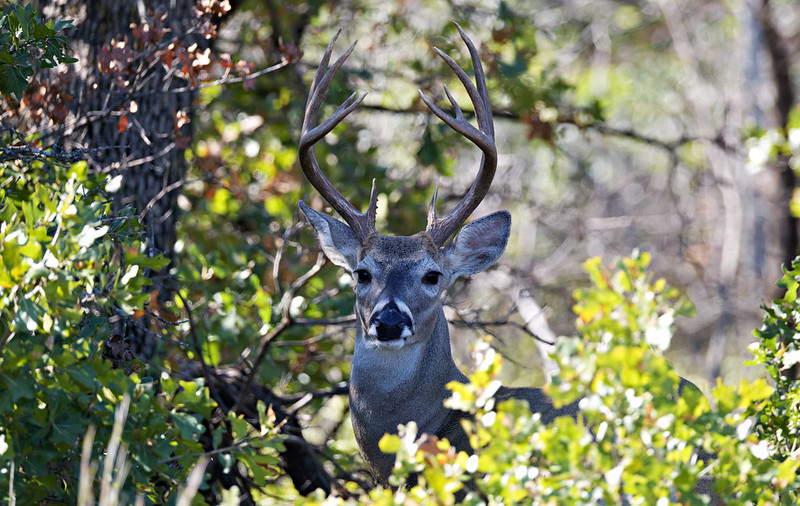
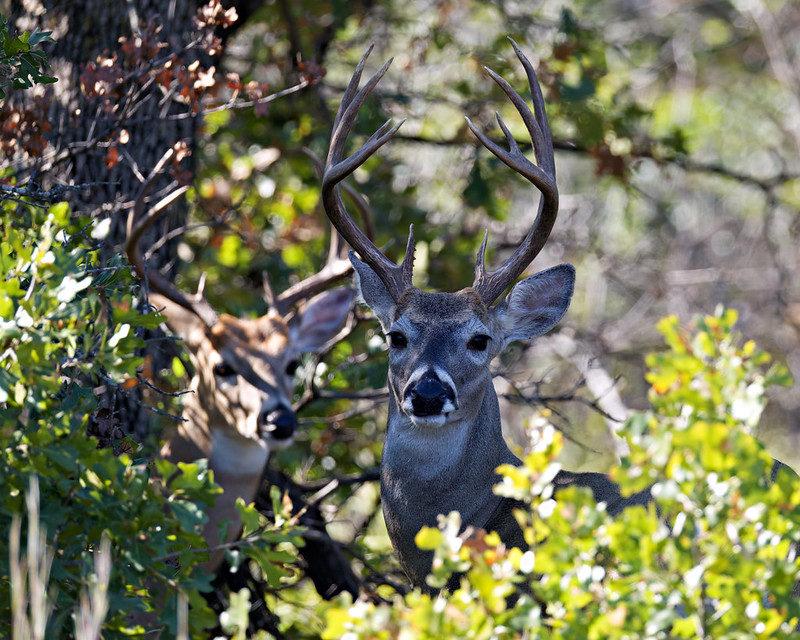
Photographing White-tailed Bucks from a Distance
The remaining photographs were taken over several days from considerable distances, which actually works to tell a different part of the story. The first image shows a Buck positioned on a golden hillside against a clear blue sky, a classic view of how these animals survey their territory from elevated positions. The final photos captures Bucks in tall prairie grass, demonstrating the scale of their habitat and how they blend into the refuge’s open grasslands.
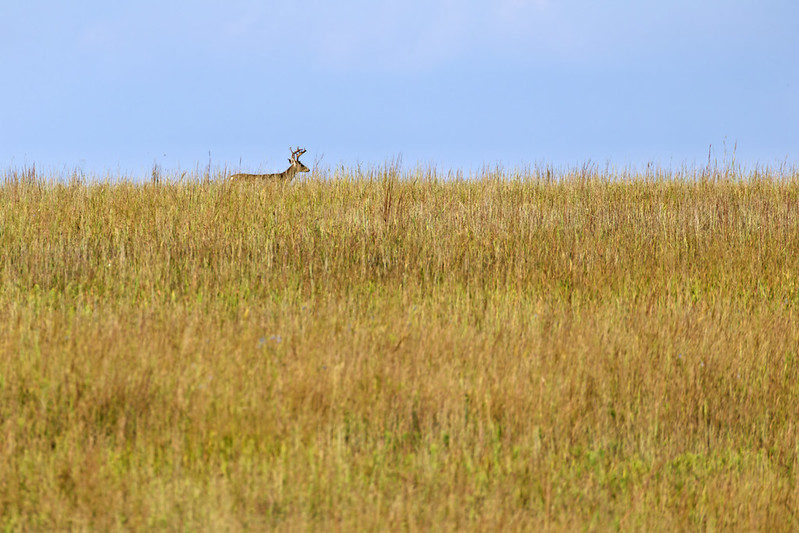
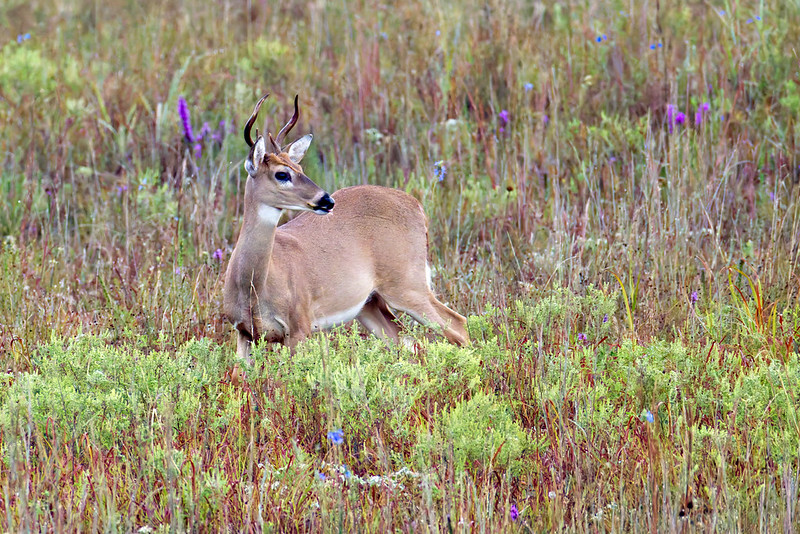
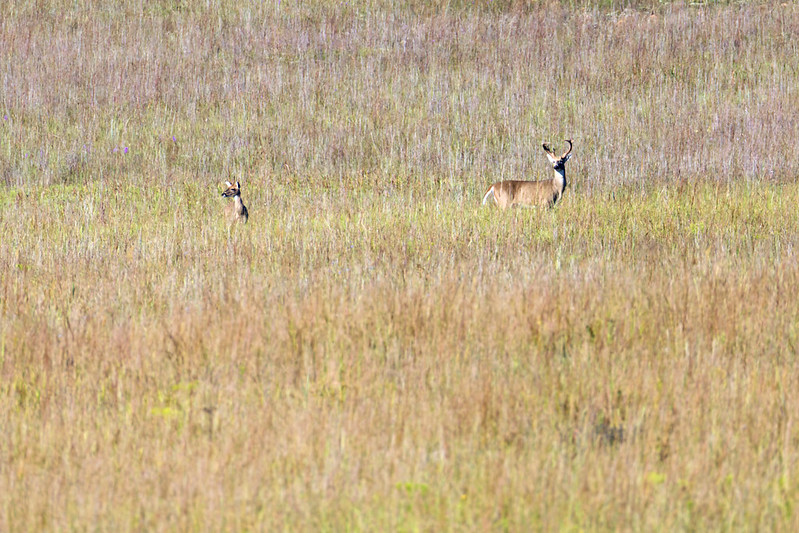
Wildlife Notes
White-tailed Deer (Odocoileus virginianus) are the most widespread deer species in North America, and the Wichita Mountains Wildlife Refuge supports a healthy population.
Earlier this year, I photographed White-tailed Bucks in full velvet at the refuge, showing an earlier stage of this antler growth cycle.
A few details worth noting in these images:
Body Condition and Habitat Use: The Buck in the wildflower field (forth image) shows excellent body condition, which reflects the refuge’s diverse vegetation. The purple flowers visible are likely liatris or ironweed, both common in Oklahoma’s prairies and important for the overall ecosystem health that supports deer populations.
Antler Configuration: The close-up shots (images 1-2) show a Buck with what appears to be a 10-point rack, five points per side. The darker coloration suggests the velvet had recently been shed when I photographed him.
Habitat Diversity: The range of environments shown, from dense oak brush to open grasslands, demonstrates the White-tailed Deer’s adaptability. The refuge’s mixed landscape of prairie, forest edges, and rocky terrain provides everything these animals need: browse, cover, water access, and territory for their home ranges.
Photography Notes
I shot all of these images with my Canon EOS R5 Mark II paired with the Canon RF 200-800mm f/6.3-9 IS USM lens. This lens has become my go-to for wildlife work at the refuge because of its versatility, I can capture both distant environmental shots and reasonably tight portraits without changing glass.
Distance Considerations:
Let me be blunt about something: the distant shots show the reality of wildlife photography at refuges like Wichita Mountains. Most of the time, the animals are far away. You can’t get close-up portraits of every encounter. Sometimes the best shot is showing the animal in context with its habitat rather than trying to fill the frame with pixels that won’t be sharp anyway. Image 5, with two Bucks in the prairie, tells a more complete story about how these animals actually exist at the refuge than another close-up headshot would.
These encounters show both the opportunities and realities of wildlife photography at accessible refuges like Wichita Mountains. The close-up Buck gave me the detail shots, but the distant views actually provide better context for understanding how these animals use their habitat. Both types of images have value, one shows the individual animal, the other shows the ecosystem.
